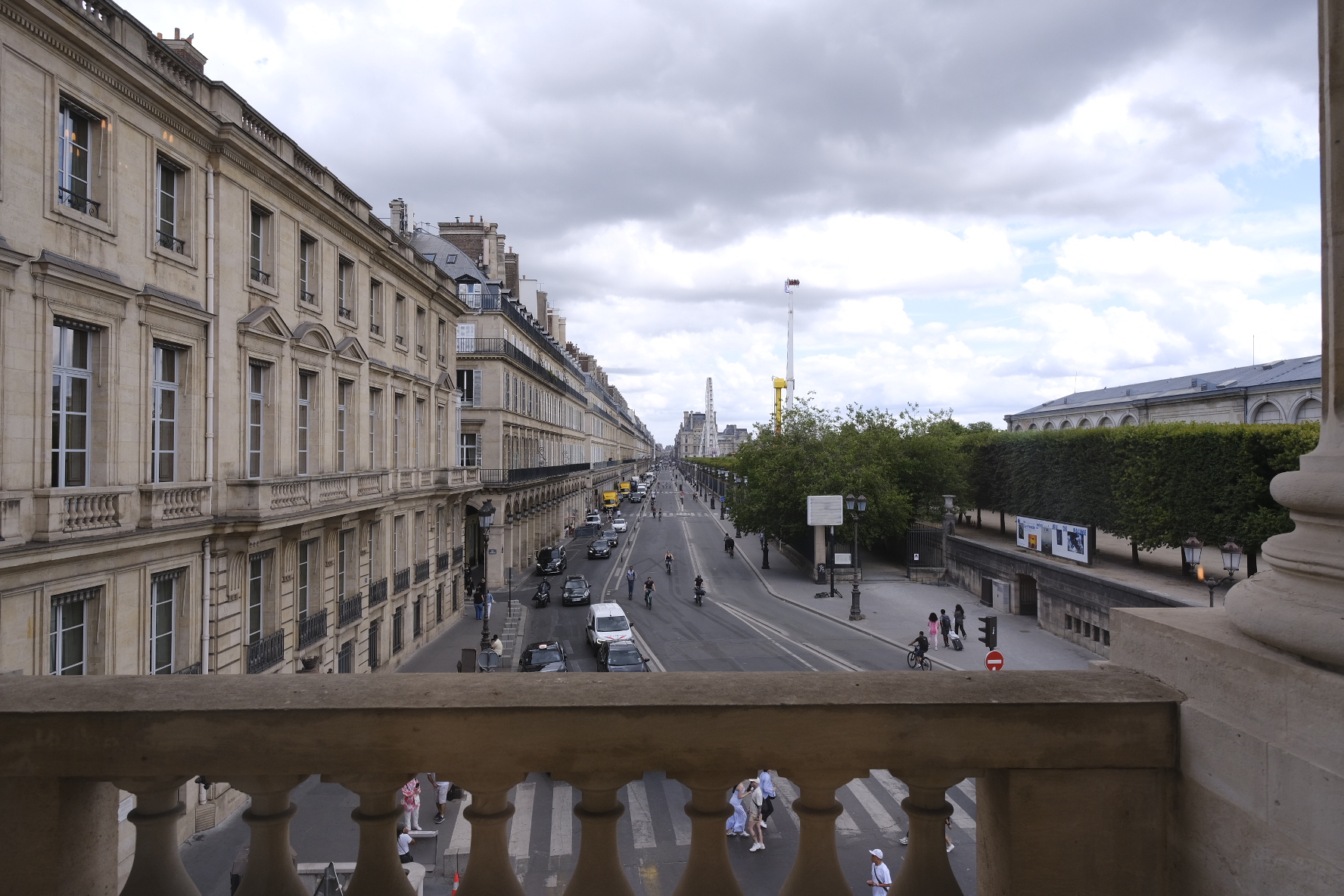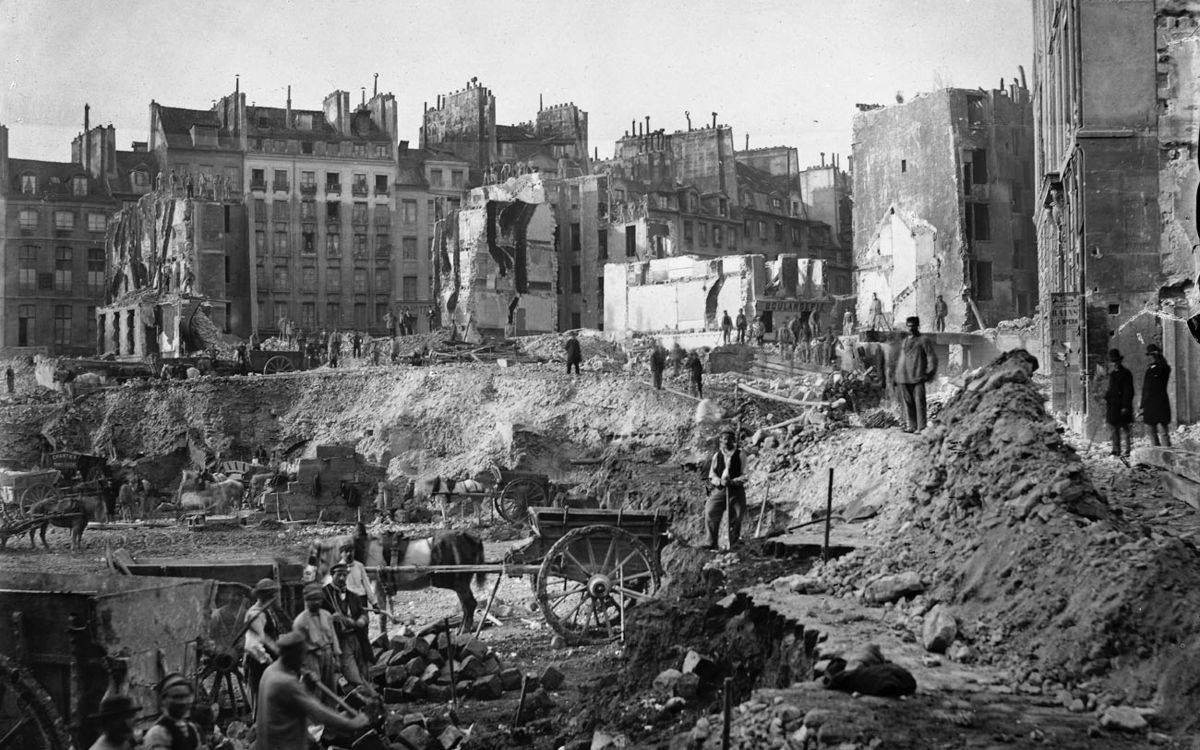Haussmann's Paris as a Blueprint for Speculative Urbanism

Haussmann's Paris as a Blueprint for Speculative Urbanism
Haussmann's Paris, often romanticized for its aesthetic unity, was (as I argue) fundamentally shaped by speculative urbanism—a nexus of financial activities, political power, and transformative urban interventions. As an analysis framework, I believe it to be a relevant lens to analyze urban transformation today, like the Dharavi Redevelopment Project. This article is setting the stage for a second one, making the link between the past and present (and future?) of large-scale urban transformations in the 21st century.
The enduring image of Haussmann's Paris—its grand boulevards and uniform architecture—belies a complex interplay of power, finance, and social engineering. This article argues that Haussmann's project was not merely a modernization effort but a deliberate strategy of speculative urbanism, where urban governance served as an investment strategy embedded within a distinctly Western, neoliberal, and progressive paradigm (better known as modernization).
Setting the Stage: Paris in the 19th Century
The transformation of Paris under Haussmann must be understood within the context of 19th-century France—a period marked by political instability and profound socio-economic changes. Following the French Revolution, France experienced a succession of shifting political regimes (republic, empire, monarchy, and so-on). Furthermore, the rise of industrialization spurred massive migration from rural areas to urban centers, particularly Paris.
During the first half of the 19th century, Paris was characterized by overcrowding, unsanitary conditions, and high levels of crime. Imagine a picture a medieval city, spurred with small, dark and intricate lanes, and where one couldn’t see what was waiting for them in the corner. The cholera epidemic of 1832 underscored the urgent need for urban reform. Paris was increasingly viewed as a source of disease and social disorder, necessitating restoration, transformation, and modernization.

Modern Paris: Work in Progress, Credit photo : Charles Marville / BHVP / Roger-Viollet – Retrieved from Paris.fr
It was within this complex context that Napoléon III seized power in 1851 (after being elected President of the Second Republic three years earlier and following his uncle’s steps), facing the need to legitimize his rule, address public health concerns, and navigate a growing industrialization and globalization. In 1853, he appointed Georges-Eugène Haussmann as Prefect of the Seine, tasking him with transforming and 'beautifying' what was going to become the ‘most beautiful city on Earth.’
Haussmannization as Speculative Urbanism
The need for Paris to be transformed dates back to the mid-1700s, but political and social challenges relegated these debates to the background. With the political context of the Second Empire, Napoléon III provided Haussmann with extensive power to transform the Parisian landscape, aiming to address political challenges.
Inspired by Saint-Simonism – top-down political philosophy believing in industrialization, technocratism, progress and a rational organisation of society – Haussmann envisioned a project to create a myth of radical break from the past, constructing a new city for a new era in French history. To legitimize his power, Napoléon III needed to erase the revolutionary sentiment prevalent in 1853.
To do so, Haussmann created an illusion of equality through the city's transformation: a modernistic, clean, and pleasant city supposedly for everyone. With the implementation of a the specific haussmannian architecture (ground floor for shops, first floor for the bourgeoise, then the middle class, and finally the house staff under the roof), Haussmann transformed how people used the public space: it was not for political purposes anymore, but for hedonistic activities and consumption (he actually invented the concept of window shopping!).
Tools of Speculative Transformation: Political, Financial, and Urban
Replacing revolutionary sentiment with a 'capitalistic mindset,' allowing the bourgeoisie to continue their speculative activities and maintain power over society, Haussmann's project can be defined by the notion of speculative urbanism — processes of urban planning and governance tied to finance operations. Haussmann's transformation of Paris was made possible by a combination of political authority, financial strategies, and urban planning tools.
Haussmannian architecture in the neighborhood Le Marais, Paris
Firstly, Haussmann operated with extraordinary authority, reporting directly to the Emperor and insulated from political opposition. The centralized and authoritarian form of the imperial regime provided the necessary conditions for the implementation of such an ambitious urban project.
Secondly, Haussmann secured funding through the mobilization of private capital. This financial strategy enabled the rapid execution of large-scale infrastructure projects, complying with the interests of oligarchs who provided loans directly to the Emperor. Additionally, Haussmann used public credits, particularly in the form of loans guaranteed by future tax revenues.
Thirdly, Haussmann orchestrated the annexation of surrounding municipalities, expanding Paris's administrative boundaries. This simplified the implementation process and improved mobility and transport, facilitating economic activities by extending the Parisian market.
This process was accompanied by widespread expropriation, disproportionately affecting working-class populations. Displaced residents were given new places to stay and financial compensation, but the displacement contributed to the social reconfiguration of Paris, pushing lower-income residents to the city's periphery.
Haussmann prioritized the creation of straight, wide boulevards and avenues, addressing public health concerns and improving circulation for people and goods. Architecturally, Haussmann imposed a coherent, symmetrical, and uniform aesthetic, emblematic of the ideals of progress and modernization.
Haussmannian architecture in the 5th arrondissement, Paris
Conclusion: Depoliticization of the Public Space
Haussmann's transformation of Paris represents a pivotal moment in urban development, extending beyond aesthetic or infrastructural improvements. One of the most significant consequences was the depoliticization of public space.
The creation of wide boulevards dismantled the dense networks of narrow streets that characterized Parisian urban fabric. With the invention of 'window shopping,' people used public space for consumption activities rather than political reunions. Boundaries between the roles of citizens and consumers blurred, diverting individuals from their role within the city and providing an illusion of equality.
This is problematic regarding democratic values, diverting popular classes from political life and enhancing the power of oligarchs with financial capital—a tendency that seems to concretize in contemporary French politics.